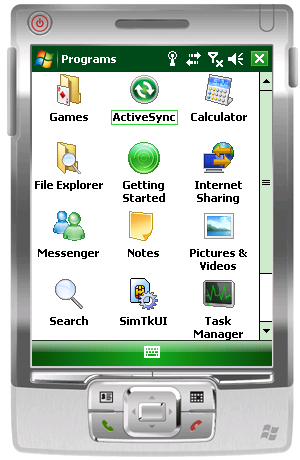Software, the Tough Tomato Principle, and the Great Weirdening of the World
Marshall McLuhan’s theory that “the medium is the message” famously describes how media are not neutral. Rather, a medium’s nature has a deep impact on the very content of its messages.
One misunderstood aspect of the theory is that it applies to all technology, not just media: any “message” (in the broadest sense of the term) ends up changing so it fits better the system surrounding it. One example is how researchers re-engineered tomatoes so they fit mechanical harvesters better. From Seeing Like a State:
Spurred by the wartime shortage of field labor, researchers set about inventing a mechanical harvester and breeding the tomato that would accommodate it. The tomato plants eventually bred for the job were hybrids of low stature and uniform maturity that produced similarly sized fruits with thick walls, firm flesh, and no cracks; the fruits were picked green in order to avoid being bruised by the grasp of the machinery and were artificially ripened by ethylene gas during transport. The results were the small, uniform winter tomatoes, sold four to a package, which dominated supermarket shelves for several decades. Taste and nutritional quality were secondary to machine compatibility.
This is counter intuitive. Most people think of tools as designed around their material, not materials around their tools. But in practice, tools and materials are constantly reshaping each other.
Benedict Evans talks of a more modern example in iPads and Tablets Growth:
[M]oving to new devices and form factors involves new software experiences, and new software also often both creates and requires new business processes. It’s hard to spend a day creating a 20-slide sales report on an iPad, even now that MS Office is available for iPad. But actually, that sales report should be a SAAS dashboard that takes 10 minutes to annotate. It will take time for those business processes to shift to enable more corporate tablet use.
In the beginning, new form factors fit existing workflows. Then, workflows fit the new form factors.
This is a powerful effect, and I find it strange that there is no name for it apart from the misunderstood “the medium is the message.” So I’ll just go ahead and call it the Tough Tomato Principle: we make tools so they accommodate the world; until the world remolds itself so it accommodates our tools.
Once you’re aware of the phenomenon, you start seeing it everywhere. Restaurants and museums optimizing for their “Instagramability.” Game developers for their games’ “Twitch spectator experience.” Online articles for search engines and social media. And even hotels for Google Maps discoverability. I could go on and on.
Spotted in SF: the impact of Google on business naming pic.twitter.com/OqXQWLG0SC
— Flo Crivello (@Altimor) September 15, 2018
The Valley of Mismatch
The Tough Tomato Principle is not a mere side effect of innovation. It’s necessary for the new technology to express its full potential. You can’t use your shiny new tomato harvester until you’ve got the tomato that goes with it.
One famous example of this is how factory owners initially failed to realize the benefits of electrification because they didn’t adapt their plants to its new logic. They just replaced their old steam engine by a big electric motor driving their plant’s steel shaft, and it would be decades before they finally started rethinking the plant around the new technological paradigm. As BBC puts it:
Factories could be cleaner and safer – and more efficient, because machines needed to run only when they were being used.
But you couldn’t get these results simply by ripping out the steam engine and replacing it with an electric motor. You needed to change everything: the architecture and the production process.
Every new technology goes through this “valley of mismatch:” it’s becoming more widespread, but people are still using it under the logic of the old paradigm. You could see it with TV, when the first shows were just recorded radio talks or theater plays. Or with automobiles when they were still called “horseless carriages” — their driver sitting at the same height as on a horse-drawn carriage, even though there is no horse to see over. It takes a while to discover the messages native to a new medium.

(Incidentally, I think one of Apple’s greatest strengths is its ability to cross the valley of mismatch. I used to own a smartphone running Windows Mobile 6, years before the iPhone came out. The one thing that was good about Windows Mobile was its name: it really was Windows, on mobile. It had scroll bars, a Start menu, and even a cross button to close “apps.” The genius of the iPhone was in its hundreds of new UI mechanics that we now take for granted: inertial scrolling, multitouch, apps closing automatically, switches instead of checkboxes, etc…
But even Apple designers can’t cross the valley of mismatch in one shot, and it took 6 years before they moved away from skeuomorphism and its textures of wood, leather, and shiny plastic.)

One instance of the Tough Tomato Principle is particularly interesting: when people are the tomatoes that have to fit their new technological paradigm. And now that we’re crossing the valley of mismatch of our new software paradigm, I want to explore how human behavior is changing to fit the machine.
The Industrial Revolution and the Organization Man
The industrial revolutions reshaped us in a similar way it did the tomato. In both cases, we couldn’t make our new machines flexible enough to fit reality. So we reshaped reality to fit the machines instead. Our rigid tools remade us in their image and created the cookie cutter “Organization Man,” captured brilliantly by Taylor Pearson:
It’s a man, not a woman. He’s white, standing somewhere between 6’0 and 6’2. He has a strong chin and medium length light brown hair parted on the left.
He walks from one meeting to the next wearing a dark suit with a pressed white dressed shirt and dark Oxford dress shoes. His wrist holds a watch – nice, but not extravagant, with a brown leather strap and a gold-rimmed face.
I do not mean to demean the machines, which have made us healthier, safer, and better educated than we’ve ever been. I think these benefits were more than worth the costs.
But the costs were real, and they were that of a great uniformization. The logic of economies of scale led to a reduction in the customizability of our products, or as Henry Ford put it: “any customer can have a car painted any color that he wants, so long as it is black.” Taylorism and division of labor led to a dumbing down of tasks, and the imperative for efficiency to a tight coupling of our activities. Our movements got synced like that of rowers on a galley, plowing to a drum’s beats.
Mad Men is a vivid illustration of the lifestyle rigidity imposed by the age of mass production. It shows a “white list” world, where people only tolerate one narrow way of living and shun everything else. You can’t be divorced, vegetarian, or homosexual. You wear your dark blue suit and live in the suburbs with your wife, three kids, dog and barbecue.

Software — A Different Kind of Revolution
This brings us to software. It is the most fluid, adaptable technology we’ve ever invented (there’s a reason it’s called software).
No technology is neutral — they always come with constraints influencing their messages. But software stands out from previous revolutions in that its fluidity lets the world break out of its straitjacket. And as mankind expresses its true nature, we discover it is a lot weirder than suspected.
How does the Tough Tomato Principle apply to the software revolution? The answer lies in an unprecedented explosion of variety in three major aspects of our lives: our consumption, work, and production.
On the consumption side, software means a world where no two people have the same experience. We all used to walk the same aisles of the same Walmart. Now we all see our own Amazon, which aisles adjust dynamically to each of us and even from visit to visit.
We used to watch the same 4 channels on TV. Now we have YouTube, its billions of channels and a programmer smart enough to know which ones we’ll like.
We don’t even see the same food menu anymore — try comparing what you and a friend see when you open Uber Eats.
Beyond what we consume, software has been revolutionizing the way we work. It’s made communication free and asynchronous — so working together doesn’t mean working at the same time. You can work whenever you want.
And of course, that communication is free and instantaneous regardless of its distance. So working together doesn’t mean working in the same office either. You can work from wherever you want.
I know, remote workers have been just around the corner for 20 years. And they are on the rise, but we’re still crossing the valley of mismatch, trying to apply the logic of the old paradigm to the new one. For now, remote work still means “just like colocated work, only with worse image and sound.” And as VCs like to repeat, it takes a 10x improvement for a new solution to replace the status quo. We need to find the workflows native to remote before it can replace colocation. You’ll know we’re there when we replace “Slack isn’t working for this — let’s meet in person?” by “in person isn’t working — let’s meet in VR?”
But it’s not just about remote work. The gig economy worker and the digital nomad are two examples of lifestyles that are native to this new paradigm. Each just has to press a button to start making money. Each works when and from wherever they want. And each gets paid in direct proportion to their output.
You can find the aesthetics of the software paradigm even in big companies. Casual attire, tattoos and office dogs are supplanting the organization man and his blue suit.
As I mentioned, the software-native worker is rewarded in more direct proportion to their work. That’s because software makes it much easier to measure and attribute that work to someone. In practice, it means the factory no longer needs to run as slow as its slowest gear. Each gear can spin as fast as it fancies, and be rewarded according to it.
Some will say that this measurability also comes at the cost of our privacy. But you rarely need your government-issued ID to do things online — something less true of the physical world. Software is anonymous by default.
This leads me to the last big thing the current paradigm shift is changing in our lives: what we can produce. This change is happening in three ways.
First, this anonymity reduces the reputational downside of experimentation. You can come up with any name — say, Satoshi Nakamoto — put your idea out there, and make billions without ever revealing your true identity. If it doesn’t work out or if it attracts too much controversy, you can always create a new pseudonym. A perk, again, exclusive to the digital world.
Second, software makes geography irrelevant. It used to be that for anything to exist, it needed its fans to live close to each other. Now, you just need to find 1000 true fans, and they can live anywhere in the world. As Kevin Kelly puts it:
[I]f even only one out of million people were interested, that’s potentially 7,000 people on the planet. That means that any 1-in-a-million appeal can find 1,000 true fans. The trick is to practically find those fans, or more accurately, to have them find you.
The final way software is changing what we can produce is by killing gatekeepers. Most people think this is important because of the efficiency gains of cutting the middle-man. But more importantly, removing gatekeepers means you don’t need to run your idea through a dozen filters before showing it to its final consumer. People get the uncut stuff directly — in all its glorious weirdness.
Paul Graham writes in The Power of the Marginal:
A couple years ago my friend Trevor and I went to look at the Apple garage. As we stood there, he said that as a kid growing up in Saskatchewan he’d been amazed at the dedication Jobs and Wozniak must have had to work in a garage.
“Those guys must have been freezing!”
That’s one of California’s hidden advantages: the mild climate means there’s lots of marginal space. In cold places that margin gets trimmed off. There’s a sharper line between outside and inside, and only projects that are officially sanctioned — by organizations, or parents, or wives, or at least by oneself — get proper indoor space. That raises the activation energy for new ideas. You can’t just tinker. You have to justify.
Software is making us all Californians: it’s like a giant heat light, turning the world into a marginal space where experimentation needs no justification.
Cryptocurrencies
We’re currently witnessing the emergence of a final piece that was missing to this whole picture: a currency native to software.
As I said, the Internet removed gatekeepers — but in one direction only. You may not need to ask for permission to distribute your content anymore, but you do need permission to get paid. If the payment gatekeepers don’t like you, you’re outta luck.
So unapproved works could exist; their creators just couldn’t make a living from them. Which means the Californization of the world only held for side projects, the ones people could spend time on without getting paid.
Cryptocurrencies are starting to change this through the permissionless-ness and anonymity they enable. And here again, the Tough Tomato Principle applies. Cryptocurrencies aren’t just another way to buy the same old things. They’re a new kind of soil in which a different kind of life can sprout.
One recent example is this group of North Korean defectors raising $27mm for their revolution by selling visas to their future country. This could never have existed before crypto — and it shows the emergence of politics native to software.
If you thought the Internet was strange, wait until cryptocurrencies get more widespread. You’ve only seen the side projects so far.
A Tumultuous Transition
As always, the transition is meeting some resistance, coming simultaneously from the bottom and from the top.
From the bottom, a lot of people simply dislike the aesthetics of the software world. They wish the tech-native millennials could just be normal. And it’s true that once one has internalized the infinite flexibility offered by software, it can be hard for them to resist the exhilarating temptation to rethink every aspect of their life from scratch. Looking for the boundaries of their new-found freedom, they often end up throwing the baby with the bathwater, wholesale dismissing all form of tradition.
It’s the same phase as the college kids who just moved out of their parents’ place. They decide to live life as it’s meant to be: by partying six days a week, eating cold pizza and beer for breakfast and sleeping until 2pm. It takes them a while to understand the reasons why their parents imposed these constraints in the first place.
Today, you can see that phenomenon in 35 years-old techies living with 15 roommates; drinkers of Soylent; consumers of nootropics; or adopters of ketogenic, paleo, or intermittent fasting diets.

As to the top-down reaction, it’s taking a bit longer, but is going to be much stronger. The biggest authority of them all is starting to realize that it too is subject to the winds of software that are making a lot of legacy power structures less relevant. You can tell we’ve passed the “oh shit” moment when you see tech CEOs having to testify before Congress. The fighting is natural — the fish wriggles hardest when it’s out of the water.
But needless to say, the genie is not going back into the bottle. Things are just getting started, and I, for one, welcome the software-induced great weirdening of the world.
Thanks to Kevin Kwok and Zack Kanter for reading drafts of this.
Flo Crivello Newsletter
Join the newsletter to receive the latest updates in your inbox.
